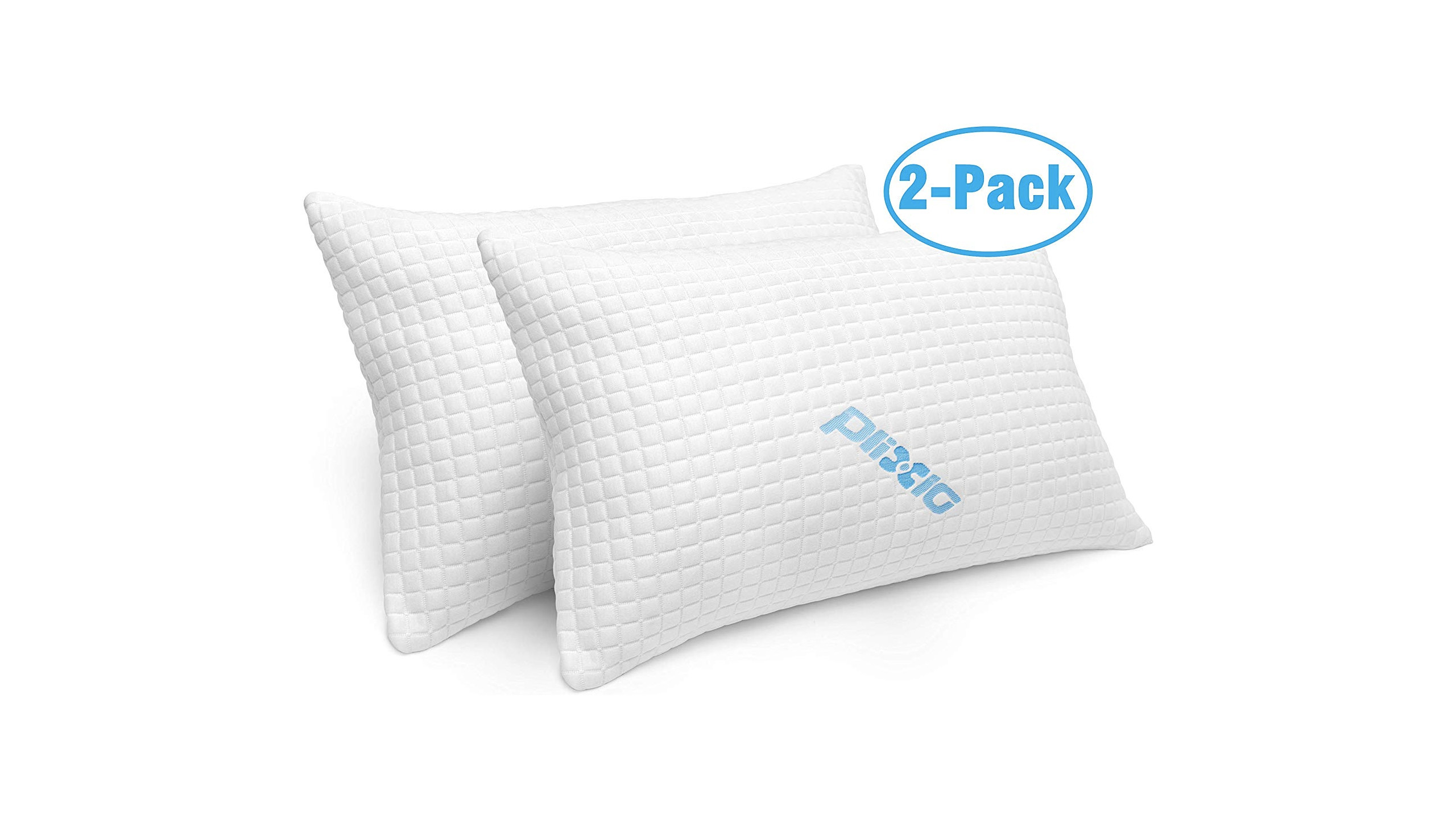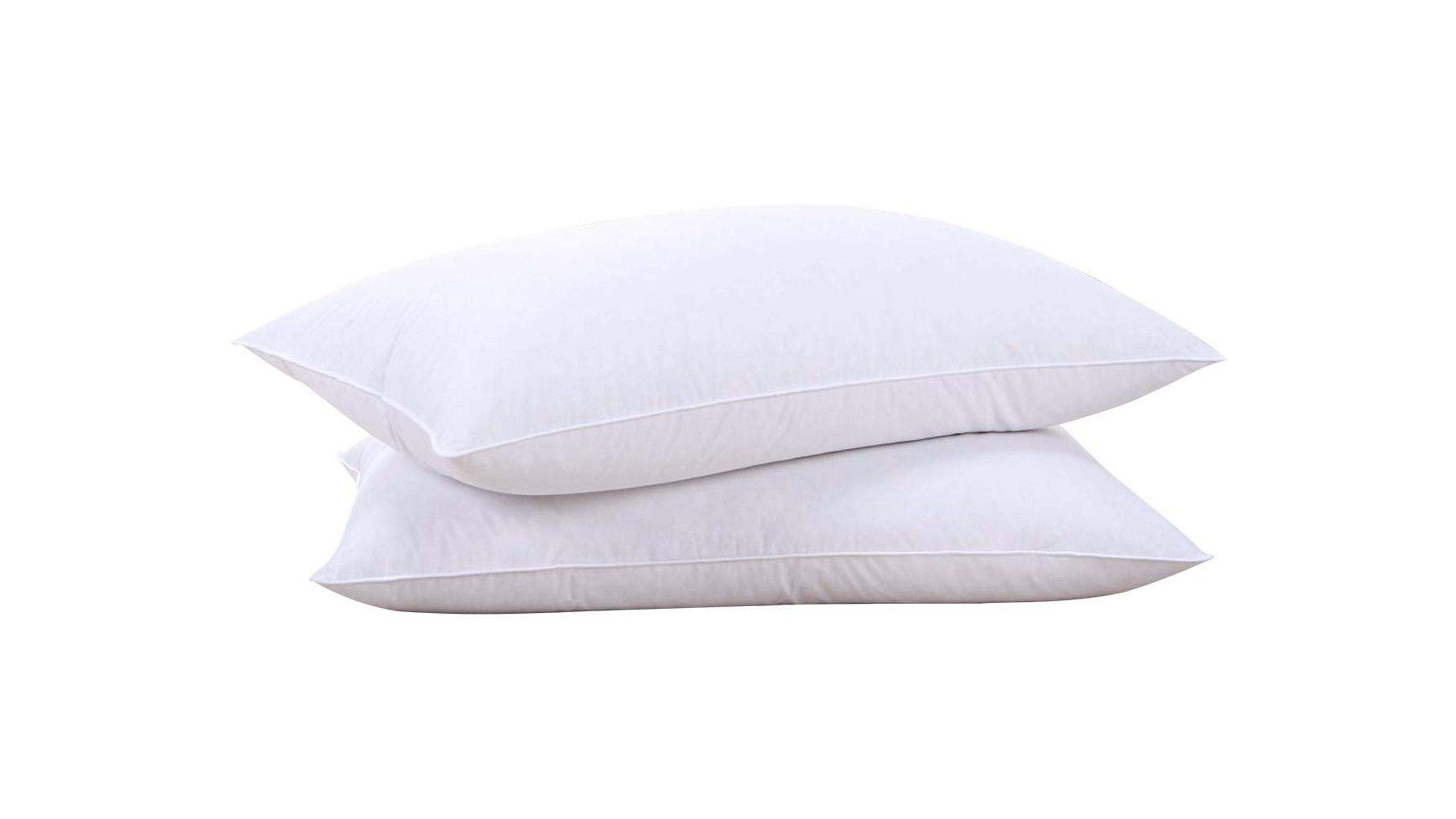It may sound self-explanatory, but the differences between down and memory foam, two of the most popular pillow types, extend further than just their material. Choosing the right pillow for your sleep style and preferences is like existing in a real life Goldilocks. But you can spend less time dealing with uncomfortable pillows and more time sleeping on the just-right pillow if you know what you’re looking for.
Memory Foam
According to Sleepopolis.com, foam (specifically latex foam) has been around since the 1950s, though the idea of “memory foam” is a more recent innovation. It was used in medical applications like wheelchair cushions or post-surgery padding. It softens under the natural heat of your body and adjusts around areas of pressure, making it slow to bounce back to its original state. That’s great for things like distributing weight evenly and relieving pressure.
Memory foam pillows tend to be suggested for people that suffer with neck or upper back pain, as the foam conforms to their head and adds an extra level of support. They also tend to be resistant to dust mites, making them great for people with asthma or allergies. The downside to memory foam is that they can feel stiff if you’re not used to it. The dense foam is great for keeping its shape, but the denseness may take some getting used to. The biggest drawback, in my opinion, is that it also retains heat, so it’s not always the best option for warm sleepers.
Sleepopolis also recommends foam pillows for people who snore, as it can help support your neck and open your throat for an easier time breathing.
Our Pick:

This shredded memory foam option, a favorite of Scouted contributor Catherine Renton, is great for those who want the support of memory foam with a little less stiffness. You can control how much or how little memory foam is inside the pillow and the shredded nature means it’s less likely to feel stiff and uncomfortable while you adjust your sleep position.
Down Pillows
Down pillows, like their comforter counterparts, are soft and luxurious. They’re malleable and able to be formed into the perfect shape for your sleep style. The filling is lightweight and they tend to be less expensive than memory foam pillows.
The main advantage of a down pillow is its ability to be shaped to your liking. You can mush and smash and fluff it to your heart’s content to get the right shape and height. Because of the space between the down, these pillows are breathable and allow airflow around your head and neck. They’re also incredibly durable. When taken care of properly, down pillows can last from 10 to 15 years without replacing.
The downsides are a little heftier for down pillows, though. Down feathers have rigid spines so you may get poked as you fluff. Speaking of fluff, they do sink in the night, so you may end up with less support throughout the night or with clumps of feathers throughout. But the biggest drawback is, well, the down. Down is made by plucking birds of their feathers that keep them warm, which can be an ethical issue for some.
Our Pick:

With over 2,000 reviews and a 4.3-star rating, this is one of Amazon’s best-selling down pillows. It has a double layer of a soft, cotton shell fabric to keep feathers from poking through.
Scouted selects products independently and prices reflect what was available at the time of publish. Sign up for our newsletter for even more recommendations. Don’t forget to check out our coupon site to find deals from Macy's, Walmart, Nordstrom Rack, and more. If you buy something from our posts, we may earn a small commission.






